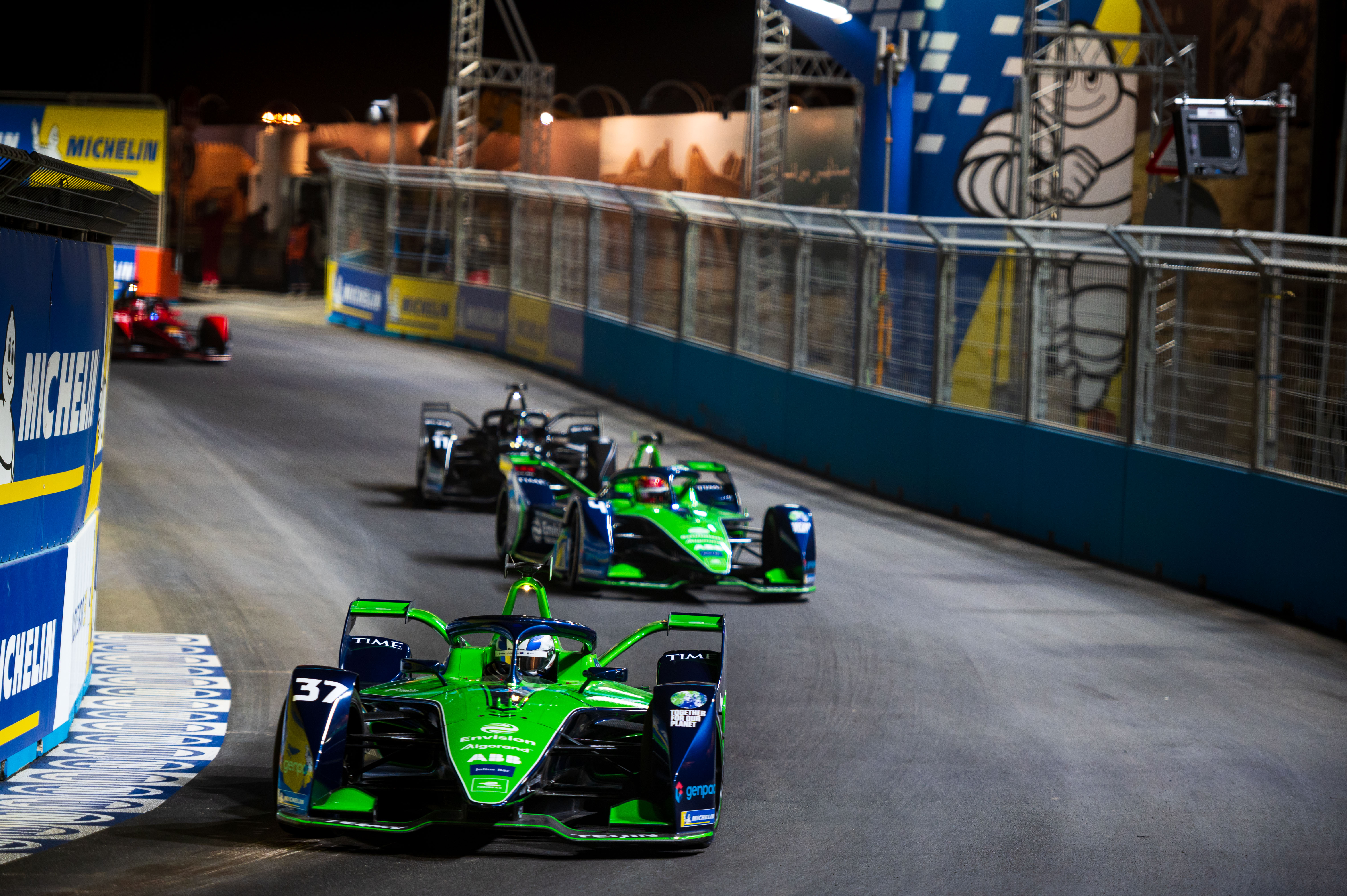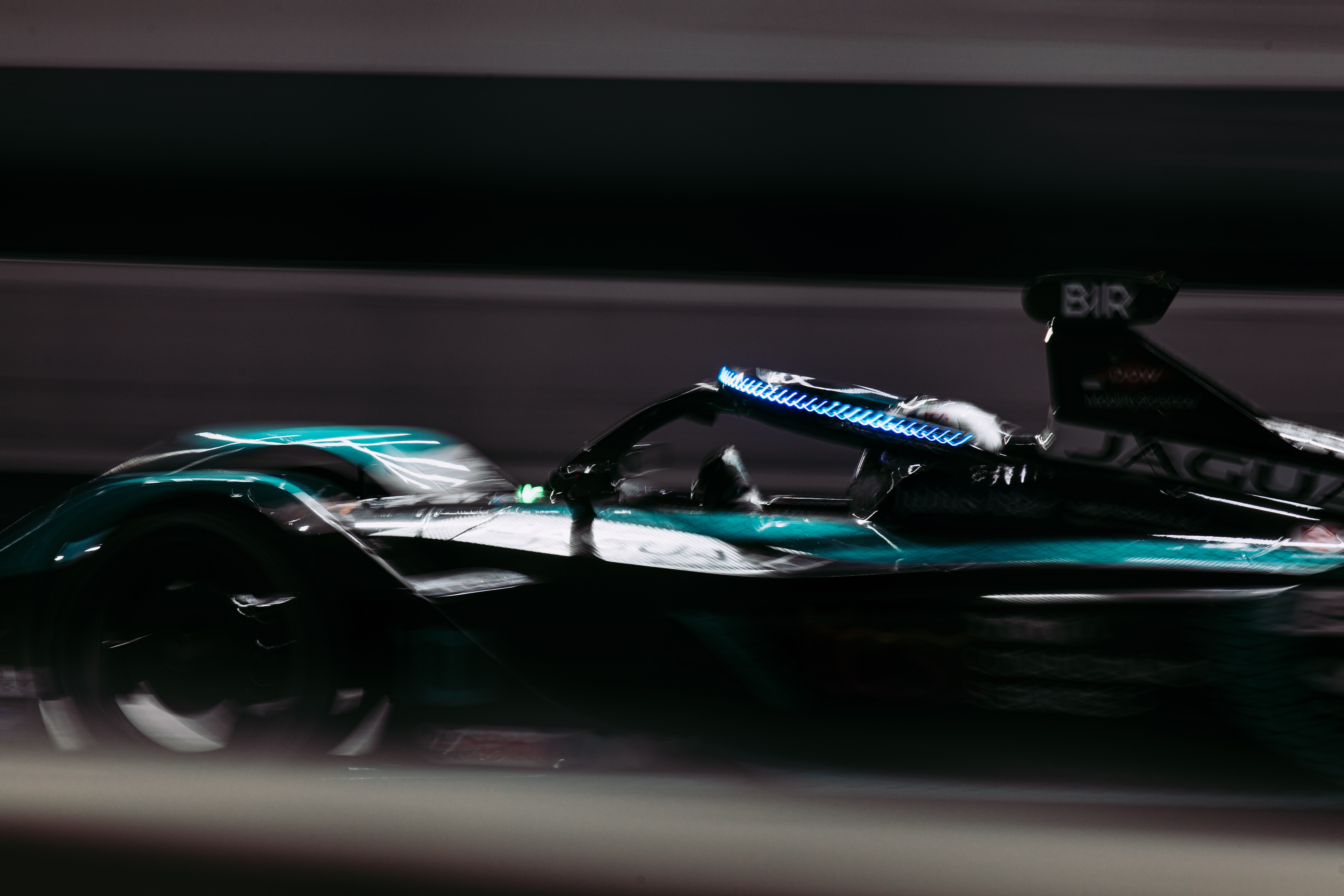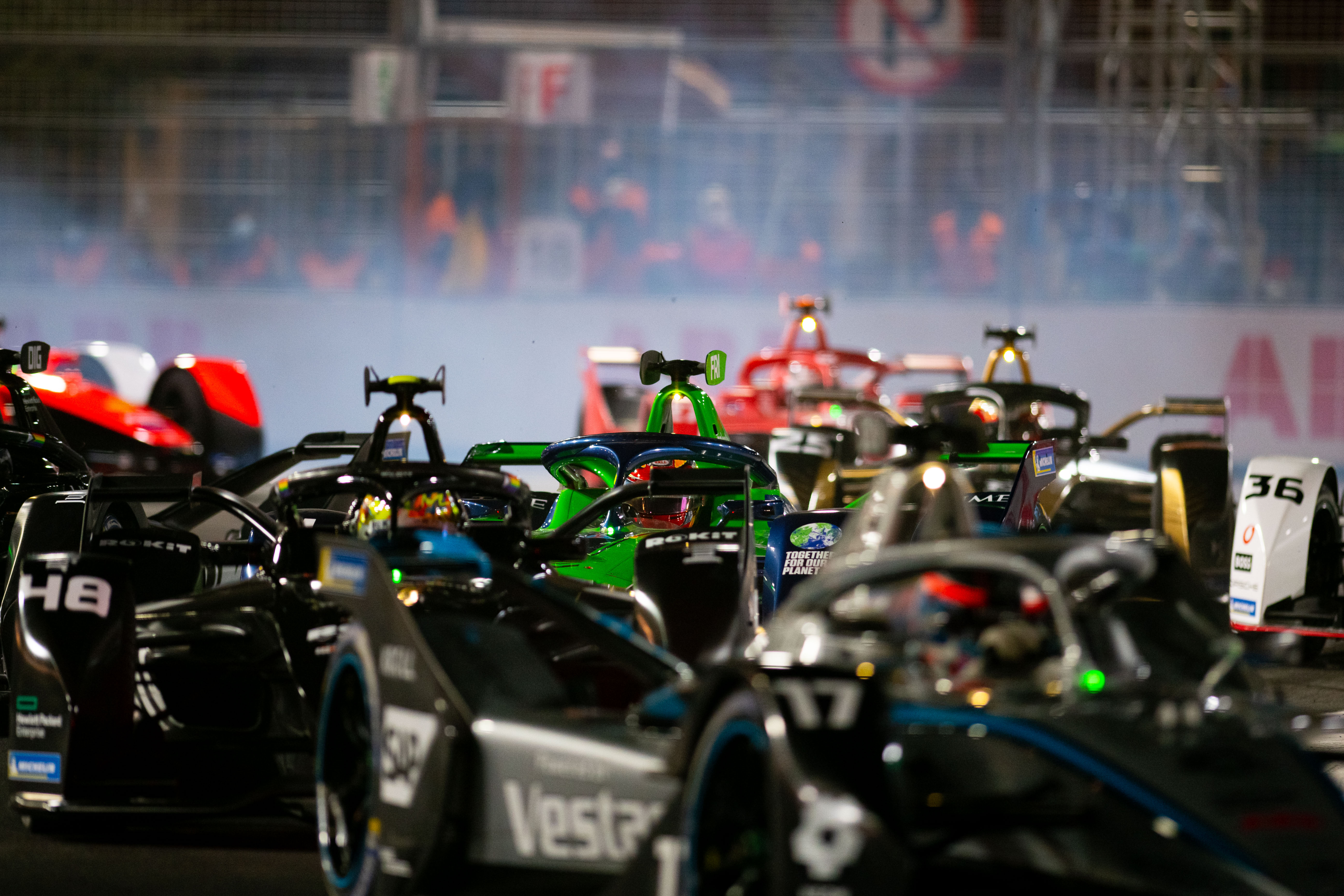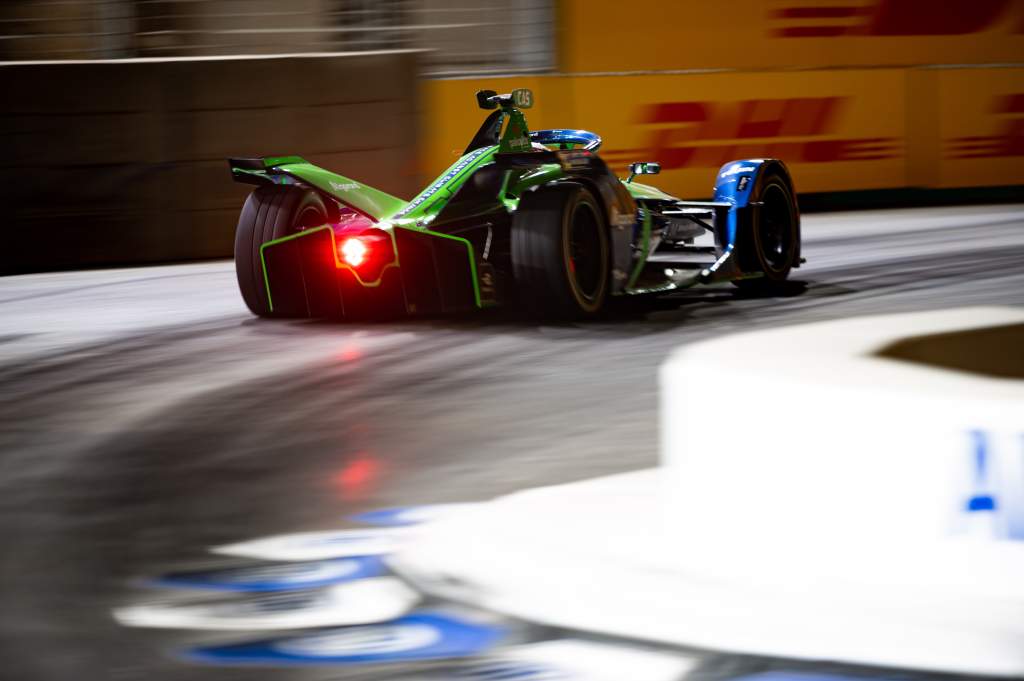There were two teams that Jaguar appeared to fit like a glove for potential Gen3 partnerships late last year, but only one of them was ready to complete a deal for the next four seasons of Formula E.
One of those teams was reigning champion Mercedes EQ but it was still recalibrating after its parent manufacturer, riddled with intra-executive discord, made its decision to not see through its initial registration for Gen3 and therefore leave FE.
The Mercedes EQ team itself continues to put together a package for Gen3, with The Race reporting last week ongoing talks with McLaren and other parties for 2023 and beyond. The outcome for that entrant is something that is presently fascinating the entire paddock.
The other team in the frame, and the one which ultimately concluded a deal with the ‘Big Cat’, was Envision Racing. Its managing director, Sylvain Filippi, a man imbued with EV visions for over a decade, identified Jaguar as the best match for his currently Audi-powered team’s future, and did so from a very early stage.
But it wasn’t just the technical capabilities that attracted Envision. In any partnership at this level there are a broad range of compatibilities that have to be met.
These range from marketing and so-called ‘higher purpose’ strategies, both crucial in Formula E, right through to simple traits of competitive working cultures.
“For Envision, it’s really, really important to understand absolutely everything that’s going on around electric vehicles, because then it will be part of the ecosystem,” Filippi told selected media last week upon pre-announcing the Jaguar deal.

“So, the purpose of our team is to accelerate the adoption of electric cars powered by renewable energy. That’s what really will change the world completely, and we are looking at these in the next five-to-10 years. It’s all about implementation and scale.”
From Jaguar’s side it made perfect sense to conclude a deal with its near neighbour, as the two are less than an hour apart by road. Jaguar has also seen the benefits of similar hook-ups between Venturi and Mercedes, as well as Envision’s present arrangement with Audi, play out in recent seasons.
“It became apparent that the blend of manufacturer to customer teams was going to be far closer than it has been in the past,” reckoned Jaguar’s team principal James Barclay.
“Our strategy previously had been not to have a customer team. But we felt the timing made sense, both from a likelihood that we’d be approached and secondly, from a strategic point of view to really work with the right customer team to strengthen both parties.
“It’s fair to say Sylvain and I started discussions actually quite early in the process, and actually that really quite quickly started to look like it was going to be the ideal partnership together.
“For us it’s about fundamentally having a competitive customer team and Envision have absolutely proven themselves to be just that.”
Doing a deal with another party as a manufacturer is not a trifling exercise though, far from it.
The support mechanism behind it, the staff required to do it, is significant. Jaguar will have to allocate personnel to support Envision, and that includes engineering, parts supply command, purchase accountancy and much more.

This is not just ‘oh, we’ll fire an engineer into the project every now and again’. It will impact on a manufacturer if it is not organised and structured properly to deliver the precise and detailed requirements.
“The rules work very smartly because we supported it to keep a healthy championship and to allow teams like Envision to not have to go and spend all that money developing a powertrain,” said Barclay.
At the same time the benefits on track are plain because as Barclay says, “having more cars with more data, without a doubt, is an advantage”.
These are the practical necessities. For now, though, the ‘halo effects’ are what will be creating the headlines for Envision. As Filippi points out, “the other significant reason why Jaguar is the perfect partner for us is the alignment of purpose”.
“Jaguar is by far the most ambitious legacy OEM in terms of vehicle electrification,” he adds.
Indeed, both entities are getting good rub-off here as they each have USPs that correlate to each other’s marketing plans.
For Jaguar it’s because the future is completely electric from 2025 by corporate design. From 2030 it will be offering electric versions across all models for both Jaguar and Land Rover as it drives toward an objective to be net carbon zero by 2039.
Envision may not manufacture EV road cars, but it does pretty much everything else, from renewable energy to smart grid storage, and the colossal Envision AESC battery tech initiative.
“It’s the biggest decision I have to make every four years, this is really significant and dictates how competitive we’re going to be,” says Filippi.
“The one thing I don’t know is the exact level of performance of the powertrain in the next cycle, I have no way of knowing that. But I can have a pretty good idea on everything else.”

Filippi makes important points here because fundamental to Formula E’s constitution is the harmony that manufacturers and teams create in a landscape of volatile boardrooms, such as BMW and Mercedes have recently evidenced.
The FIA and Formula E have defined a framework where manufacturers are duty-bound to provide their hardware within specific commercial regulations and balance.
That has been embellished by the ‘Maserati Clause’ that was recently added to the manufacturer registration documents in order to facilitate brands that want to come in and might be already affiliated to groups in Formula E.
The FIA’s Frederic Bertrand gave an overview of how the governing body has helped to shape the present landscape for manufacturers and teams, saying that “we have made this agreement much more detailed, so that we understand more, and that teams as privateers understand more the duties and what they get from the manufacturer”.
“On the manufacturer’s side, we have made some changes in the figures so that they are covering their cost in a better way,” Bertrand added.
“They can also organise better their work and also know better what they have to provide, and what a team can do by itself.”
Several other Gen3 partnerships between teams and manufacturers will be forthcoming in the coming weeks. Some will be a surprise, while others won’t be. But the crucial thing for Formula E as a championship is that it will have stability in the vast majority of its new alliances.
In Jaguar and Envision’s case it will also likely have not only one of the most forward-looking, but also arguably the most competitive, partnerships for the duration of Formula E’s Gen3 era.






